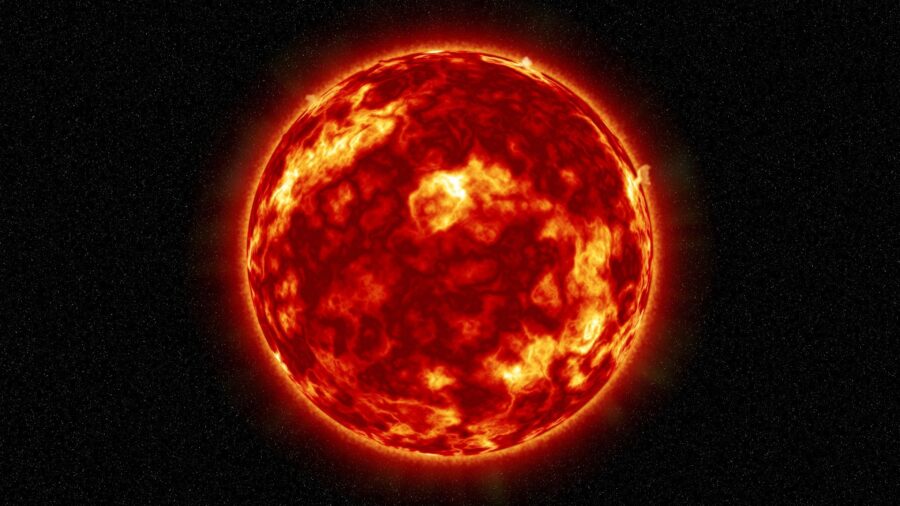The Sun Is Breaking Off Into Pieces And Scientists Are Stunned

Scientists have discovered that a massive filament of solar plasma has broken off from the sun’s surface. The fragment is currently circling its north pole in a vortex of powerful winds. However, no one seems to know what caused it. Footage of the phenomenon, captured by NASA’s Solar Dynamics Observatory, was shared via X by space weather forecaster Tamitha Skov.
“Talk about polar vortex! Material from a northern prominence just broke away from the main filament and is now circulating in a massive polar vortex around the north pole of our star,” Skov wrote about the sun. “Implications for understanding the Sun’s atmospheric dynamics above 55° here cannot be overstated!” she added.
The sun has been behaving oddly for months, and now a polar vortex has formed on its surface.
“Polar vortex” is often used in weather-related discussions on Earth. However, the vortex near the sun comprises charged particles and magnetic forces instead of icy winds and clouds. Scott McIntosh, a solar physicist and deputy director at the National Center for Atmospheric Research, said that while this vortex is strange, something odd has been happening at the sun’s 55-degree latitudes every 11 years.
Known as a solar cycle, the 11-year time frame is characterized by fluctuations in the sun’s activity, which includes the generation of sunspots and eruptions. During this cycle, polar crowns form at the 55-degree latitudes. Scientists believe this is linked to the reversal of the sun’s magnetic field, which occurs once every solar cycle.
Despite understanding the sun’s mechanics, the phenomenon remains a mystery.” Once every solar cycle, it forms at the 55-degree latitude, and it starts to march up to the solar poles,” McIntosh told Space.com. “It’s very curious. There is a big ‘why’ question around it. Why does it only move toward the pole one time and then disappear and then come back, magically, three or four years later in exactly the same region?”
Scientists have found that with as much as we know about the sun, there’s even more we don’t understand, in this case, why the sun’s magnetic field flips during each solar cycle.
While filaments of solar plasma tearing away from the poles have been observed before, the formation of a polar whirlwind is new. This event has sparked curiosity among scientists, as the sun’s polar regions play a crucial role in generating its magnetic field, which drives the sun’s 11-year activity cycle. However, the area in which the phenomenon takes place cannot be directly observed.
The sun can only be observed from the ecliptic plane, which is the plane in which planets orbit. The European Space Agency’s Solar Orbiter mission aims to shed light on this perplexing occurrence. By capturing images of the sun from within the orbit of Mercury, the mission’s unique vantage point of a 33-degree upward tilt could provide valuable insights.
However, McIntosh thinks that a more comprehensive mission might be necessary to fully unravel the mysteries of the sun’s polar vortex. Throughout history, scientists have observed various solar phenomena where fragments or material have broken away from the sun’s surface. These events provide valuable insights into the sun’s behavior and interactions with its surrounding environment.
“It’s very curious. There is a big ‘why’ question around it. Why does it only move toward the pole one time and then disappear and then come back, magically, three or four years later in exactly the same region?”
Scott McIntosh, deputy director of the National Center for Atmospheric Research
Solar flares and Coronal Mass Ejections (CMEs) are explosive events that release energy and particles, while prominences and filaments are plasma structures that can become unstable, ejecting fragments into space. The solar wind is a continuous stream of charged particles originating from the sun’s outer layers, contributing to the sun’s dynamic nature.
Coronal holes, regions of open magnetic fields, release high-speed solar wind, and sun-grazing comets can fragment due to intense heat and gravitational forces as they approach the sun. However, these instances don’t typically involve large-scale fragmentation. By studying these events, scientists gain insights into solar physics, space weather, and the sun’s influence on Earth and the solar system.










